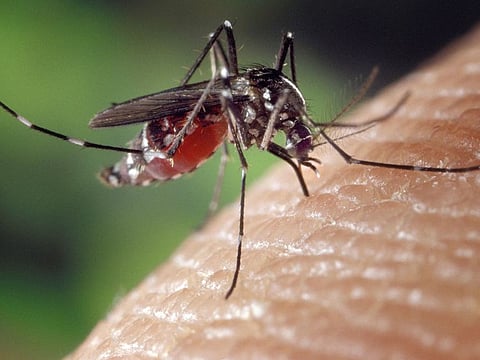The return of Oropouche virus: All you need to know about it
Travellers carry it from Cuba to other parts of the world after outbreak in South America

The re-emergence of the little-known Oropouche virus is causing global concern. As of August 1, over 8,000 cases have been reported in South America, while the United States has recorded 21 infections in travellers returning from Cuba.
The surge in cases of this tropical viral infection since 2023 has prompted the Pan American Health Organisation to raise its risk level from moderate to high in August. The World Health Organisation has assessed the public health risk as high at the regional level but low globally.
The arbovirus (a virus spread by insects), first identified in 1955, has resulted in approximately 500,000 reported cases. Despite two recent deaths in Brazil on July 25, the disease is generally not fatal. In some instances, however, it can cause meningitis and encephalitis, according to the medical journal The Lancet.
Here’s what we know about the disease and why it’s causing concern:
What is Oropouche virus?
Oropouche virus, native to forested tropical areas, was first identified in 1955 in a 24-year-old forest worker in Trinidad. It is named after the nearby village of Vega de Oropouche.
Why is it called sloth fever?
The virus is also known as sloth fever or sloth virus because early investigations found it in areas with sloths. While the first wild animals found to carry the virus were howler monkeys, it was also discovered in a pale-throated sloth in Brazil in 1960. Other hosts include rodents and birds.
How does Oropouche virus spread?
The virus spreads to humans through insect bites, primarily from small biting flies called midges and certain mosquitoes. The microbe is endemic to the Amazon basin, with people visiting these areas at risk of being bitten and subsequently carrying the virus to urban locations. Human-to-human transmission has not been documented. The spread is influenced by factors such as climate change, human and animal mobility, deforestation, and land use.
What are the symptoms of Oropouche fever?
Symptoms are often mild and resemble those of dengue, chikungunya, and Zika, including fever, headache, muscle and joint pains. A rash, light sensitivity, and nausea may also occur. In about 5% of cases, severe symptoms such as bleeding, meningitis, and encephalitis can develop, with signs including severe headache, dizziness, neck stiffness, double vision, eye movements, and infection in cerebrospinal fluid.
How long will Oropouche fever last?
Most cases are mild and resolve within seven to eight days. Severe infections are less common, and complications are rare. Patients generally recover fully, though some may experience lingering aches and fatigue for weeks.
Is Oropouche fever fatal?
The disease is rarely fatal. Since 1955, there have been around 500,000 infections, with only two reported deaths in Brazil.
How many Oropouche cases have been reported?
Since 1955, approximately 500,000 infections have been reported in the Amazon basin. The recent outbreak is confined to South America and the Caribbean, with over 8,000 cases documented in Bolivia, Brazil, Colombia, Cuba, and Peru. In the US, 21 cases have been reported, mostly from Florida, with one in New York. European health officials have found the virus in Spain (12 cases), Italy (2), and Germany (2), all linked to travel in Cuba.
What’s the treatment?
There is no specific cure for Oropouche fever. Symptomatic treatment is recommended, but aspirin should be avoided as it may worsen bleeding complications.
Are there vaccines to prevent Oropouche infections?
No vaccines are currently available for Oropouche fever. Some are being tested in animals but are not yet proven effective in humans.
Can Oropouche infections be prevented?
Prevention focuses on avoiding insect bites in disease-prone areas by wearing long trousers and long-sleeved shirts. Insect repellents can help, but midges are small enough to bypass screens on doors and windows.
Are there other concerns?
In Brazil, there are investigations into the possibility of transmission from a pregnant woman to a foetus, reminiscent of concerns during the Zika outbreaks. The US has advised pregnant women to avoid non-essential travel to Cuba and recommended preventive measures against insect bites.
Why is this Oropouche outbreak worrying?
The current outbreak, with over 8,000 cases, is larger and more widespread than previous ones, affecting both endemic and non-endemic areas, from Cuba in the north to Sao Paulo in the south. The outbreak has also been linked to two deaths in healthy, non-pregnant women in Brazil. Experts are investigating potential links to stillbirths and the possibility of mother-to-foetus transmission.
Has the Oropouche virus undergone mutation?
Recent unpublished analyses suggest that the Oropouche virus may have undergone genetic changes allowing it to replicate faster, a BBC report said. The virus’s ability to evade the immune system and possibly resist previous infections is also under investigation.
Sign up for the Daily Briefing
Get the latest news and updates straight to your inbox



